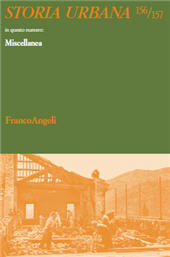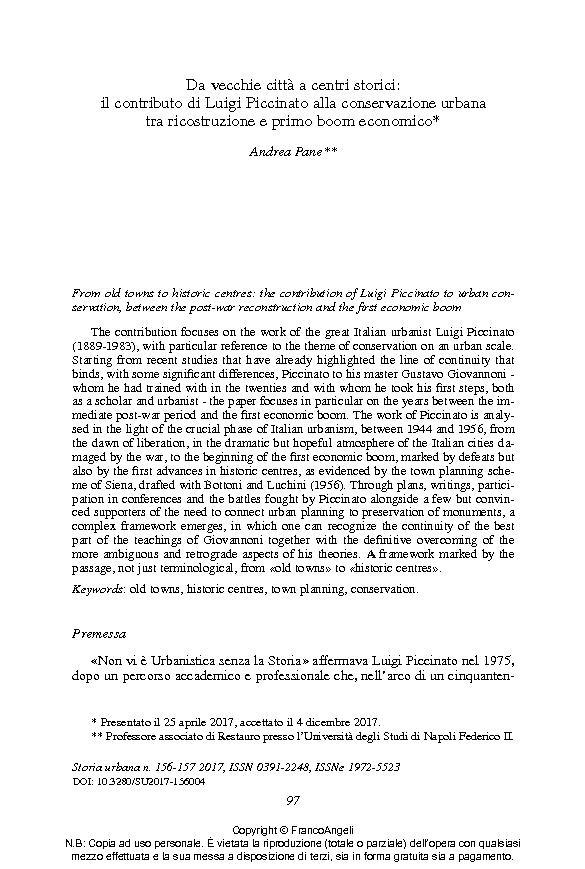Da vecchie città a centri storici : il contributo di Luigi Piccinato alla conservazione urbana tra ricostruzione e primo boom economico
97-123 p.
The contribution focuses on the work of the great Italian urbanist Luigi Piccinato (1889-1983), with particular reference to the theme of conservation on an urban scale. Starting from recent studies that have already highlighted the line of continuity that binds, with some significant differences, Piccinato to his master Gustavo Giovannoni - whom he had trained with in the twenties and with whom he took his first steps, both as a scholar and urbanist - the paper focuses in particular on the years between the immediate post-war period and the first economic boom. The work of Piccinato is analysed in the light of the crucial phase of Italian urbanism, between 1944 and 1956, from the dawn of liberation, in the dramatic but hopeful atmosphere of the Italian cities damaged by the war, to the beginning of the first economic boom, marked by defeats but also by the first advances in historic centres, as evidenced by the town planning scheme of Siena, drafted with Bottoni and Luchini (1956).
Through plans, writings, participation in conferences and the battles fought by Piccinato alongside a few but convinced supporters of the need to connect urban planning to preservation of monuments, a complex framework emerges, in which one can recognize the continuity of the best part of the teachings of Giovannoni together with the definitive overcoming of the more ambiguous and retrograde aspects of his theories. A framework marked by the passage, not just terminological, from «old towns» to «historic centres». [Publishers' text].
Fait partie de
Storia urbana : rivista di studi sulle trasformazioni della città e del territorio in età moderna : 156/157, 5/6, 2017-
Articles du même numéro (disponibles individuellement)
-
Informations
Code DOI : 10.3280/SU2017-156004
ISSN: 1972-5523
DISCIPLINES
KEYWORDS
- Old towns, historic centres, town planning, conservation



